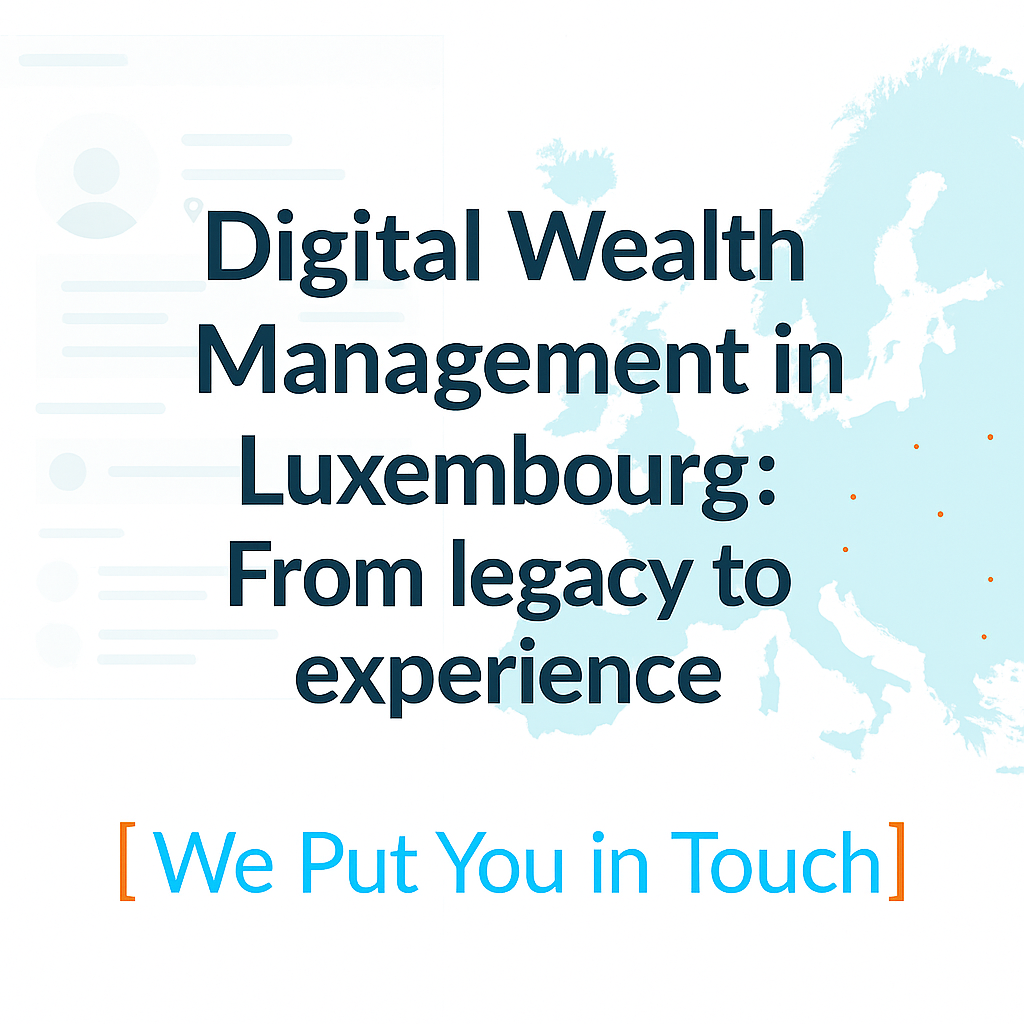
Reframing the Client Relationship
For decades, wealth management in Luxembourg has been defined by discretion, bespoke service, and long-standing human relationships. But the nature of those relationships is evolving. As younger, digitally native clients begin to account for a growing share of wealth, expectations are shifting—from handwritten reports and personal phone calls to real-time data, intuitive interfaces, and secure, seamless communication.
In a market where private banks and wealth managers compete not only on performance but on client experience, digital tools have become central to the service proposition. The challenge is no longer whether to digitise—but how to do it without sacrificing the trust and personalisation that define the Luxembourg model.
The New Baseline: Digital Access and Control
Affluent clients today expect more than reactive service. They want direct access to portfolio data, interactive reports, and tools that let them engage with their advisors on their own terms. Across the market, wealth managers are prioritising four key capabilities:
- Mobile apps and client portals that provide live portfolio views, historical performance, ESG indicators, and document access.
- Secure messaging and digital vaults that allow clients to communicate and exchange documentation without relying on email.
- Personalised insights, driven by behavioural and portfolio data, that suggest timely actions or trigger advisory touchpoints.
- Integrated onboarding and KYC tools to reduce friction in client lifecycle management, while ensuring full compliance with AML requirements.
These features are no longer differentiators—they are becoming the baseline for credibility in the industry.
Beyond Features: Rethinking Service Models
In Luxembourg, where many institutions rely on legacy systems and conservative client service models, digital transformation often requires more than investment—it demands rethinking workflows and culture.
The most advanced players are not just layering digital tools onto traditional models. Instead, they’re orchestrating hybrid journeys where relationship managers remain central, but are empowered by platforms that automate reporting, standardise communications, and surface the right information at the right moment.
This new model is not about replacing people—it’s about enabling them to focus on what clients value most: strategic conversations, contextual advice, and tailored asset allocation.
Barriers to Execution
Despite the promise, many firms still struggle to move beyond pilot tools or fragmented interfaces. Common roadblocks include:
- Legacy architecture: Difficulties integrating new apps or platforms with back-end systems that weren’t built for real-time interaction.
- Siloed data: Client data often resides in separate systems across departments, limiting the ability to personalise or automate communication.
- Cultural resistance: Some relationship teams remain hesitant to engage clients through digital channels, particularly for sensitive topics.
- Compliance concerns: Ensuring that digital communications, storage, and analytics comply with GDPR, MiFID, and local supervisory expectations adds complexity—especially when tools are sourced externally.
Yet these challenges are not insurmountable. With the right sequencing, governance, and expertise, institutions can modernise at their own pace without compromising control.
Strategic Talent: A Missing Ingredient
Much of the difficulty lies not in the technology, but in the capability to design and implement coherent digital journeys. Success depends on understanding both regulatory context and user experience expectations.
This is why more Luxembourg firms are turning to specialised consultants or interim experts—digital product owners, UX leads, change managers, and digital compliance advisors—who combine sector understanding with execution skills. Platforms such as We Put You in Touch help institutions build agile teams around digital projects without locking into permanent structures. See here how we support this shift.
Conclusion
Digital transformation in wealth management is not about adopting the latest app—it’s about delivering a seamless, consistent, and personalised experience across every interaction. In Luxembourg, where client profiles are increasingly diverse and cross-border, this transformation is both a challenge and an opportunity.
Firms that act now to modernise their service model—not just their technology stack—will define the next era of trusted, tech-enabled wealth advisory.
References
- Enhancing Client Experience in Wealth Management – The Wealth Mosaic, 2024
- Digital Experience in Private Banking – Luxembourg for Finance, 2023
- Evolution in Wealth Management – Luxembourg for Finance, 2024
- Global Wealth Management Research – Major Trends in Client Digital Expectations
- Rethinking Front-to-Back Efficiency in Wealth – Industry Roundtables, 2023–2025
